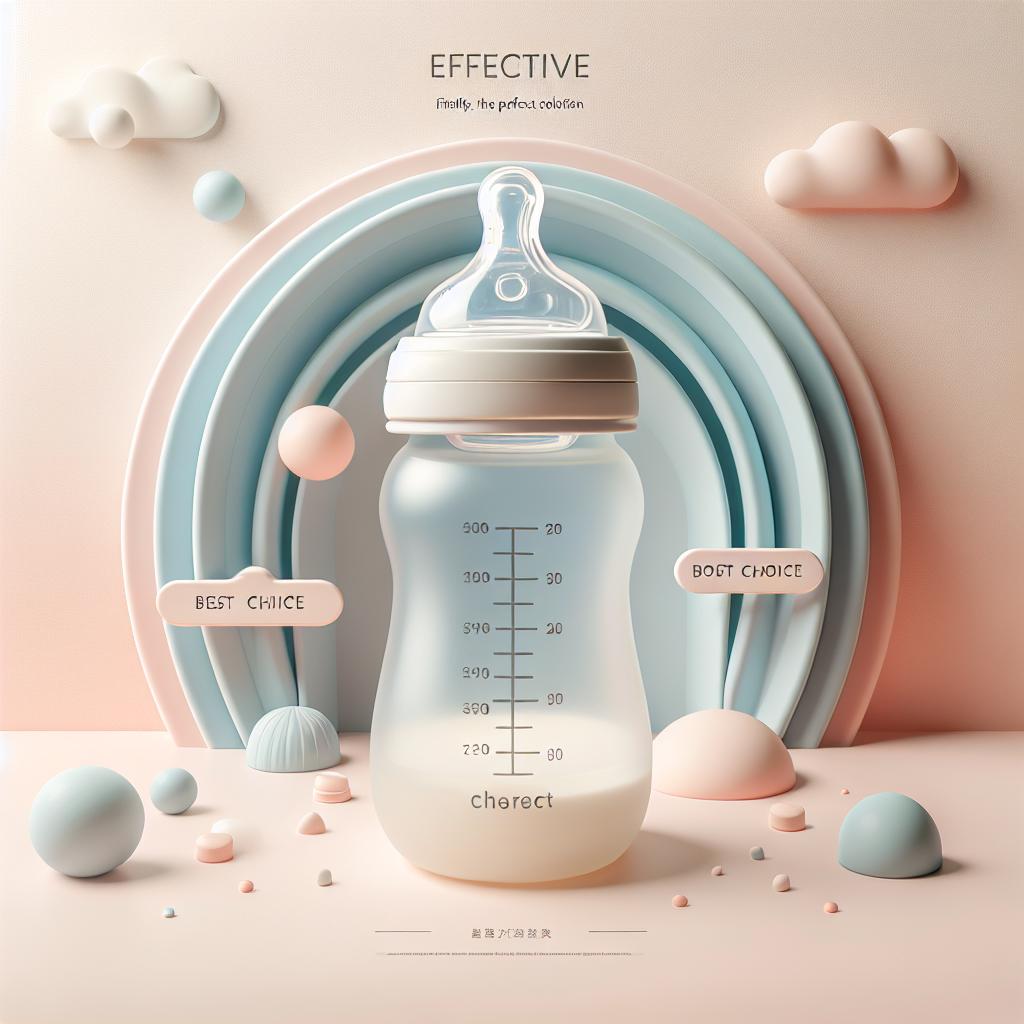Getting to the Bottom of Bottle Feeding
When you decide it’s the right time to make the transition from breast to bottle, you might feel a bit overwhelmed. After all, both you and your baby have been adhering to the comfortable routine of breastfeeding for several months. This smooth change can be daunting, but with the right information and tools, it doesn’t have to be. And that’s what we’re here to discuss.
Finding the Right Bottle
In your quest to accomplish the smoothest transition from breast to bottle, the first step is finding the right baby bottle. Ideally, you’ll want to choose a bottle that mimics the natural shape, movement, and flow of the breast to help your baby adjust more easily. If you’ve got a picky eater, you’ll want to find the perfect bottle for your breastfed baby. There are various types and brands of baby bottles available, so here are a few tips on what to look for:
- A wide-based nipple similar to a mother’s breast
- Anti-colic features to reduce gas and fussiness
- BPA-free materials for safety
- Easy to clean and assemble
Easing Your Baby into Bottle Feeding
You’re not going to just hand a bottle to your baby and expect them to know what to do with it. Making a smooth change involves a gradual transition process.
One of the most successful methods involved in an easy switch includes introducing the bottle gradually. You can start by replacing one breastfeeding session with a bottle feeding session. Once your baby becomes comfortable with this, you can continue to replace more breastfeeding sessions as needed.
Another great tip is to have someone else give your baby the first few bottle feedings. This helps because babies often associate their mothers with breastfeeding. Having a partner or caregiver introduce the bottle might reduce their expectation of breastfeeding. Check out more tips for bottle-feeding success from real moms who’ve been there.
Supporting Nutrition During the Transition
As you’re making this transition, it’s paramount to ensure that your baby continues getting the nutrition they need. You can include formula or breast milk in the bottle during the early stages of the transition. Consulting with your pediatrician about feeding amounts and schedules can be beneficial.
This transition can be a sensitive time for both parent and baby. It’s essential to remain patient and responsive to your baby’s needs during this journey. Remember that every baby is unique and might take their own time to adjust to the new feeding method. You can also seek support and advice from breast to bottle tips and more.
Breast to Bottle: A Personal Journey
Transitioning from breast to bottle is not just about choosing the right equipment and following expert advice. It’s about navigating through a personal journey filled with trials and triumph. Embracing this change with confidence and patience can make all the difference to you and your baby.
Each mom will have different experiences when it comes to switching from breast to bottle. If you’re interested in hearing about one mom’s personal journey, check out this mom’s transition story for more insight and encouragement.
Remember, while the transition may seem daunting, it is an incredibly normal part of your baby’s growth. With some patience, trial and error, and the right tools and techniques, you can transform this challenge into an enriching feeding experience.
Understanding and Addressing Baby’s Resistance to Bottles
The transition can be challenging when it comes to babies who are resistant to take bottles. This is a common thing many moms encounter and it doesn’t in any way signify that there’s something wrong with the baby or the bottle. You just need to understand the reasons behind the resistance and address them efficiently.
Switching from breast to bottle feeding is a major transition for your baby because the way they latch on to a bottle teat is different from a breast nipple. The baby may also miss the warmth and intimacy provided by breast feeding. A guide on introducing a bottle to a breastfed baby can be handy and can offer some insightful advice on tackling these issues.
Personalizing the Bottle Feeding Experience
Just as breastfeeding is an intimate act of bonding, bottle feeding can be as well. Consider adopting habits and methods that make bottle feeding a warm and loving experience. This can include skin-to-skin contact, holding your baby close to you, maintaining eye contact, and talking softly to your baby during bottle feeds.
Finding the best temperature for the milk in the bottle is another consideration. Babies often prefer their milk to be warm, similar to breastmilk, so you may wish to heat it slightly before feeding. Seeking advice from an expert can help you understand how to choose the best bottle for your breastfed baby and adjust the temperature accordingly.
Adhering to a Regular Bottle-Feeding Schedule
It’s important to establish a regular feeding schedule when introducing your baby to bottle feeding. This ensures they are getting the proper amount of nutrition and helps them adjust to their new feeding method.
Although structuring a feeding schedule may seem straightforward, it requires flexibility as your child grows and their needs change. Multiple factors need to be considered when developing a schedule, such as the baby’s age, weight, activity level, and overall health. Continue to consult with your pediatrician to monitor your baby’s growth and adjust the feeding schedule accordingly.
Considering Nighttime Bottle Feeding
Nighttime bottle feedings can sometimes pose a different challenge, as your baby would have been accustomed to the comforting aspects of breastfeeding during the night. Introducing a bottle at night too soon might disrupt your baby’s sleep patterns.
You might consider deferring the nighttime bottle until your baby is more comfortable with bottle feeding during the day. Find the right technique that works for your baby altering the nipple flow or using a specific type of bottle, which could ease the transition for night feedings.
Identifying Potential Bottle Feeding Issues Early On
Another critical component of transitioning your baby from breast to bottle is recognizing potential feeding issues early. For example, colic is a common issue that can result in fussiness, crying, and discomfort during and after feedings. Bottles specially designed to reduce colic can be beneficial in such cases.
Also, your baby may have a difficult time switching from a bottle back to the breast if the need arises. Consulting with a lactation expert can help identify potential issues and provide strategies to address them. Even though it can be frustrating, remember to be patient with your baby. Check out these breastfeeding to bottle-feeding tips for some extra guidance.







